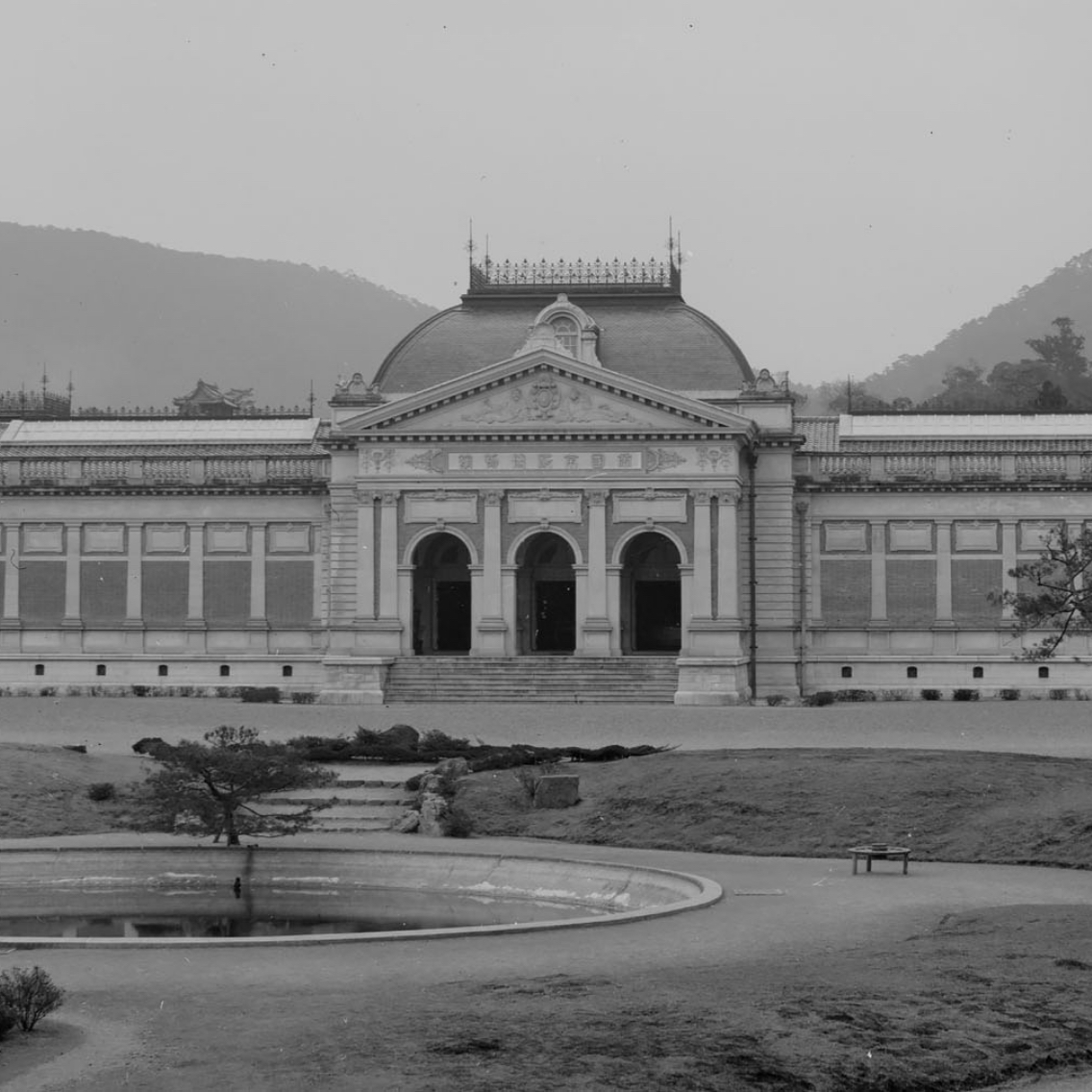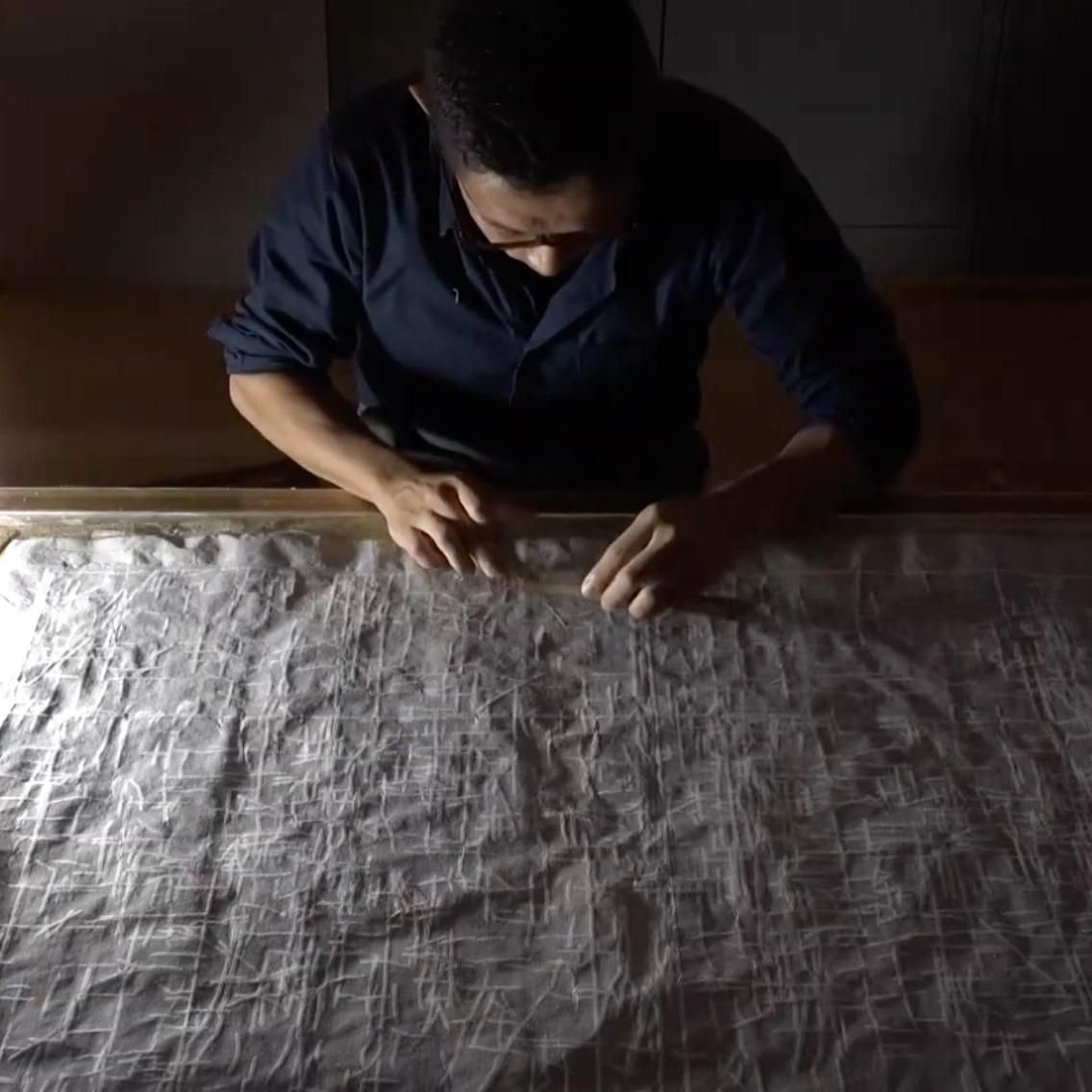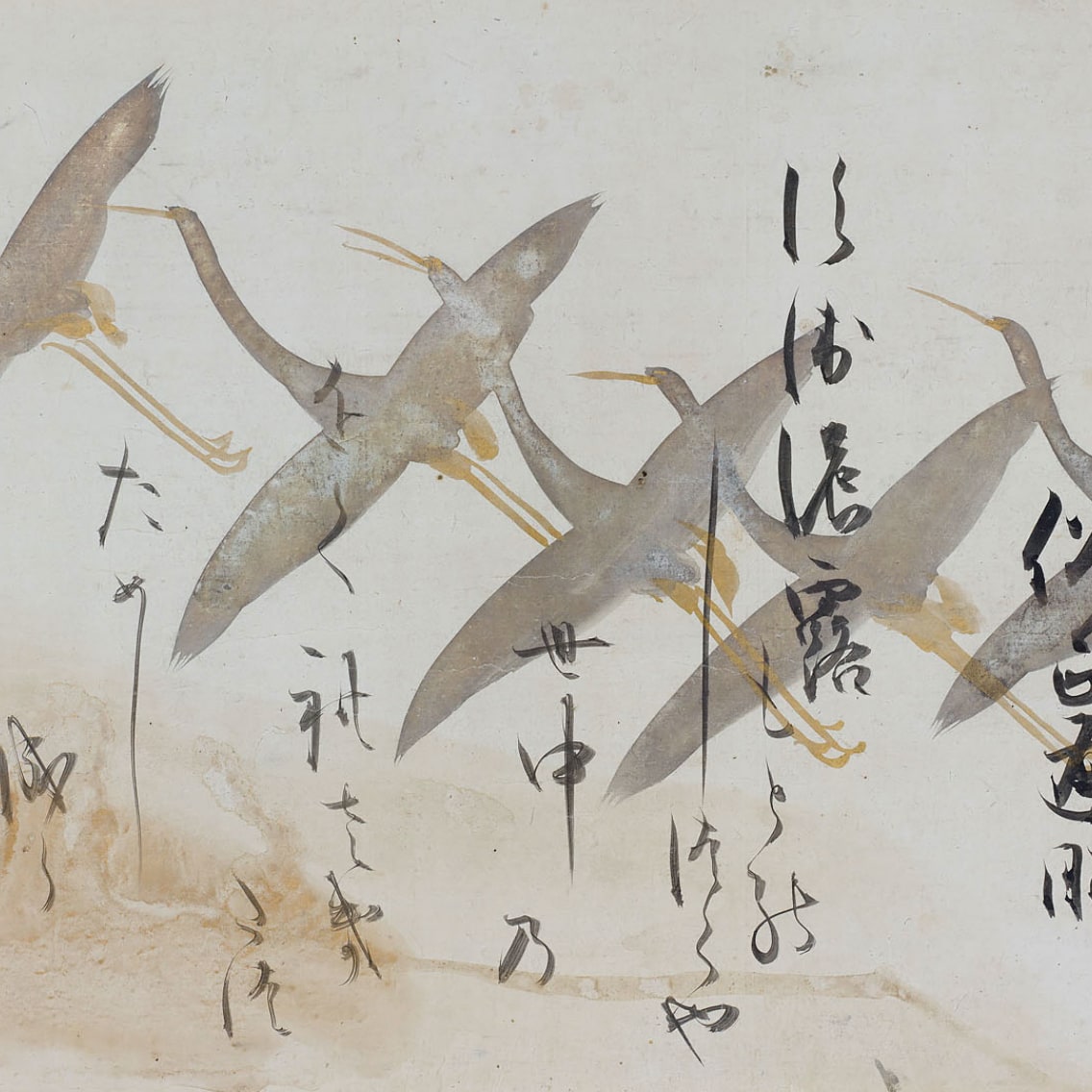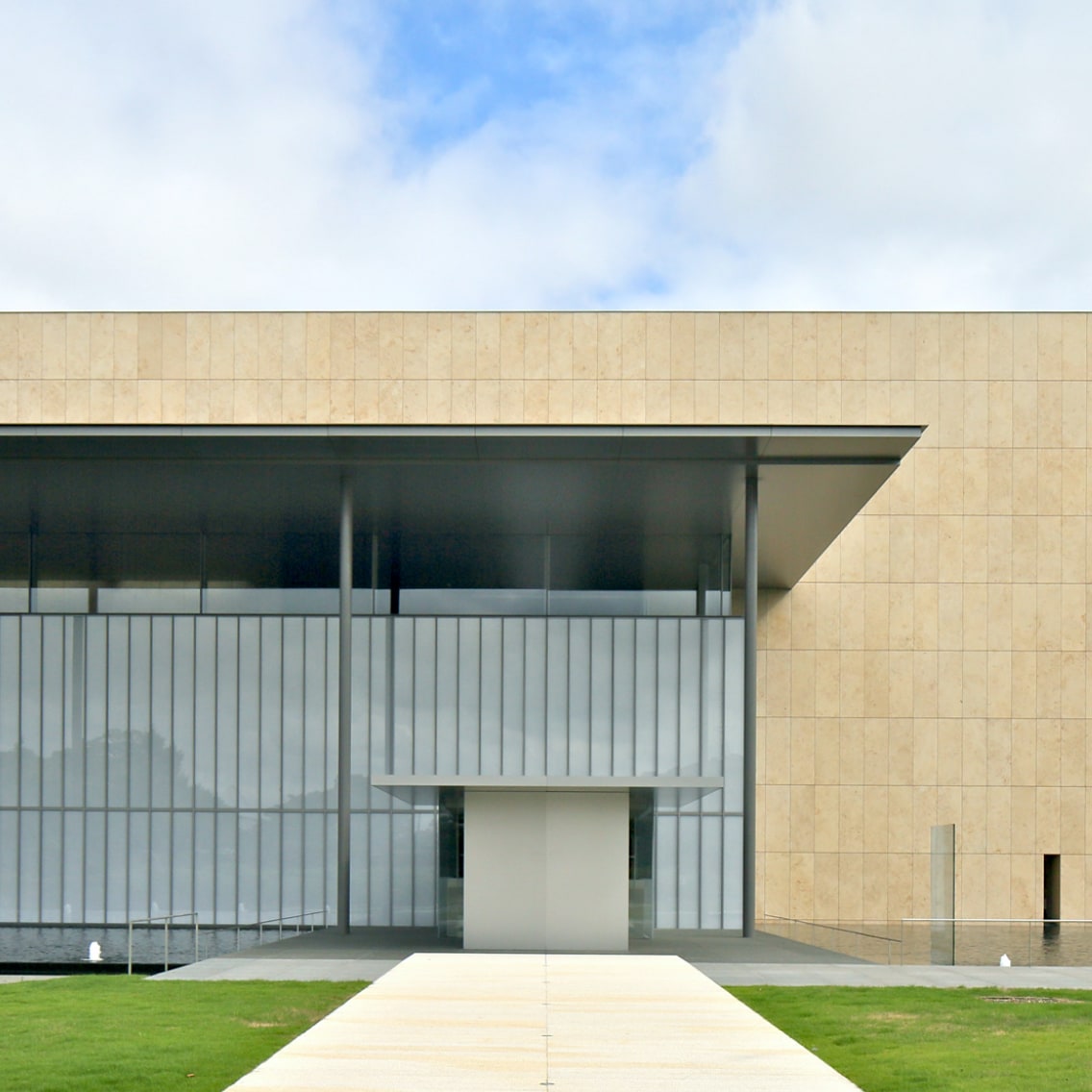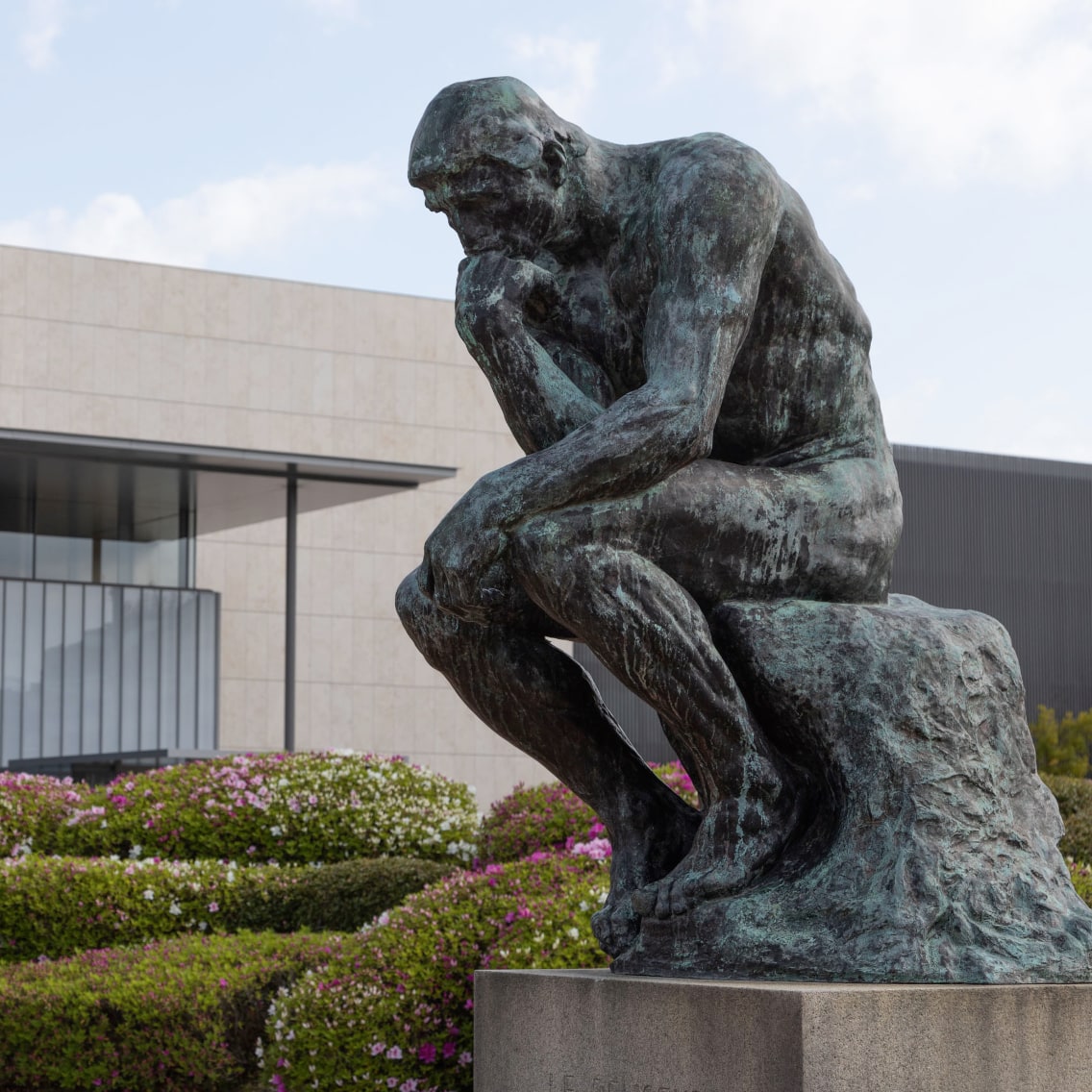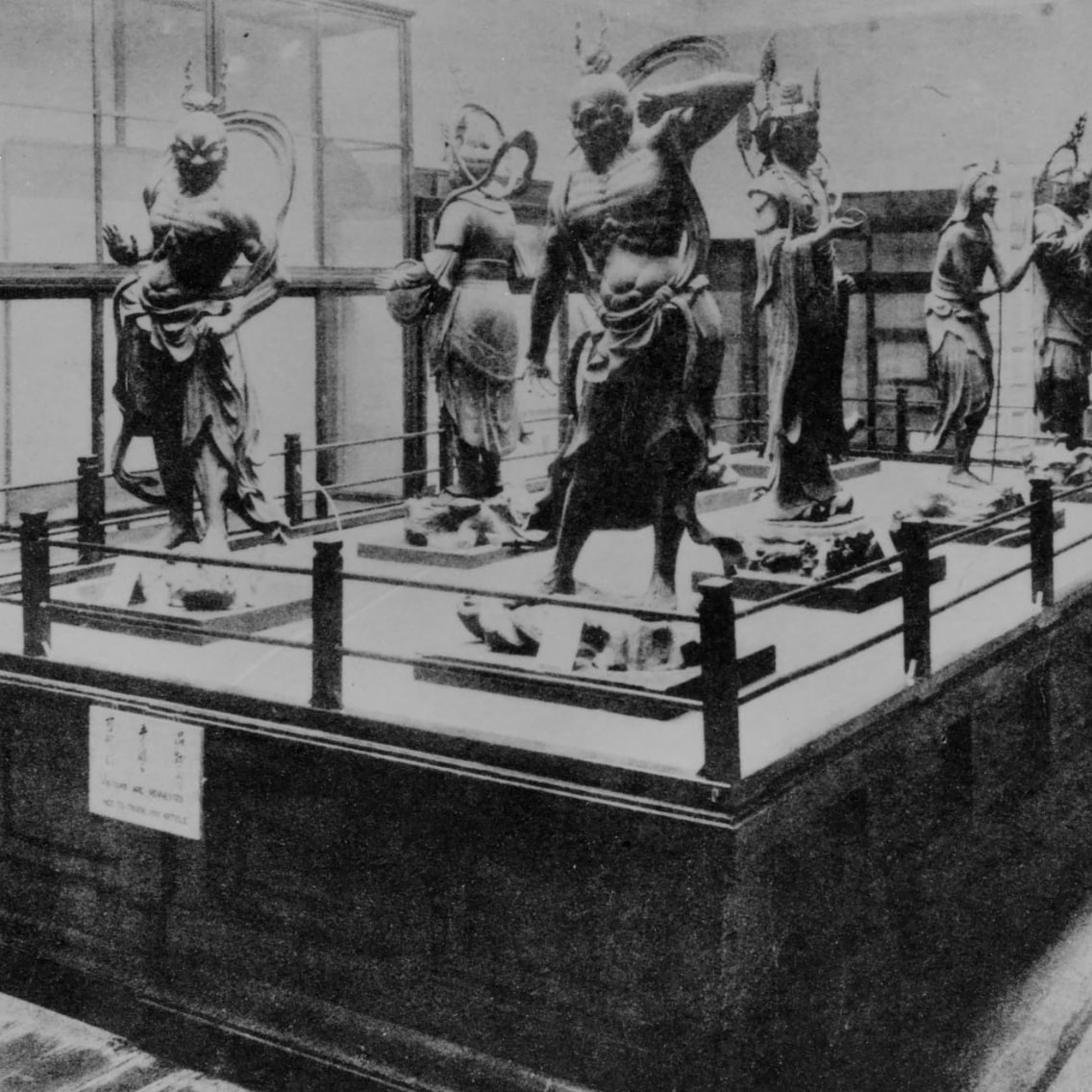Improvements
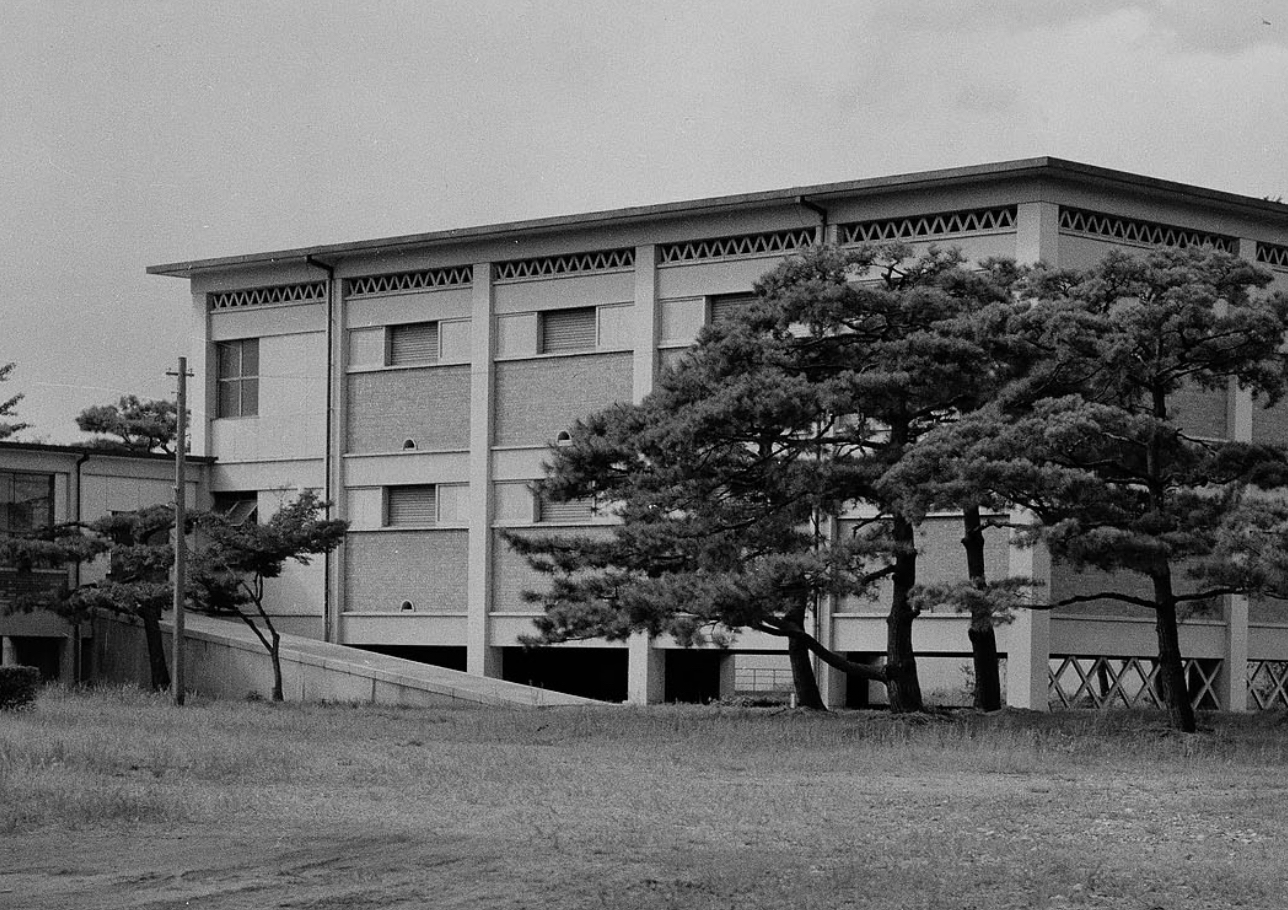
The North Storage, designed by Morita Keiichi (1895-1983), immediately after its construction in 1956
Maintaining and Modernizing the Facilities
For the Sake of the Art
Restoration of the Main Hall began soon after the museum came under the administration of the Japanese national government in 1952 and was renamed the "Kyoto National Museum." The copper roof was reshingled, and fluorescent lights, the most advanced lighting system at the time, were installed over a period of six years. A new facility for storing the collection, the North Storage, went into use in 1959.
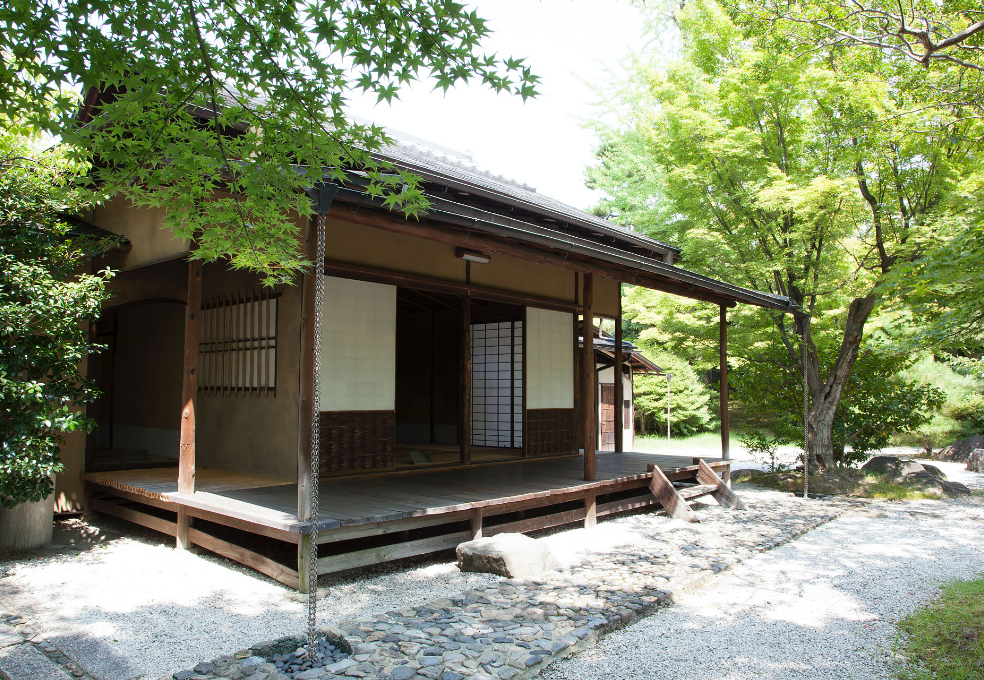
The Donation of the Tan'an Teahouse
In 1957, the museum celebrated its sixtieth anniversary, in honor of which the Kyoto industrialist Ueda Tan'ichirō (Tan'an, b. 1906) donated a teahouse the following year. Named Tan'an, after its donor, this facility may today be rented for tea gatherings and other events.
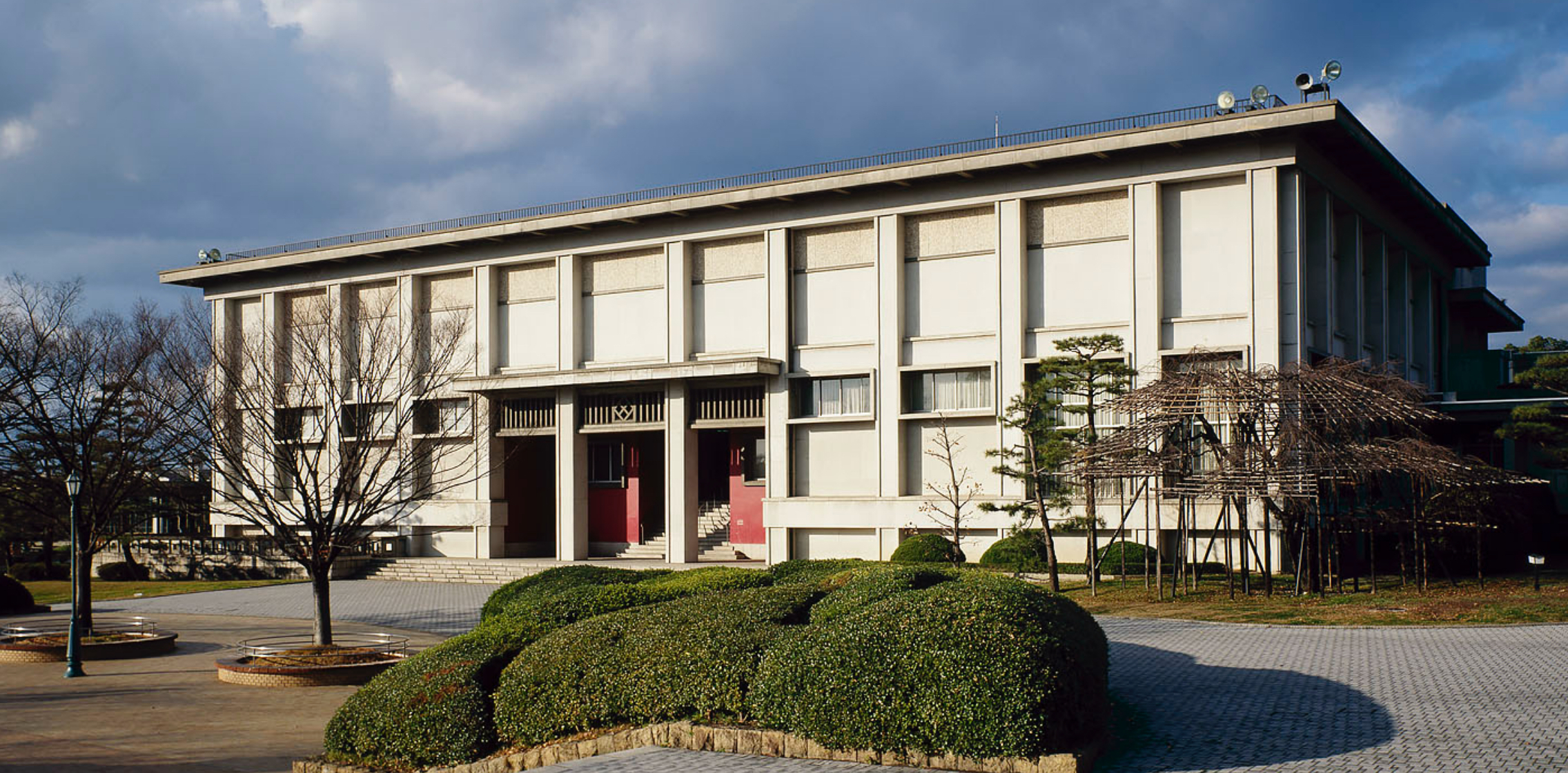
The New Exhibition Hall, designed by Morita Keiichi (1895-1983), completed in 1965
A Long-Awaited New Exhibition Hall
A Museum for the Twentieth Century
Following the Second World War, the museum underwent extensive modernization. The construction of new museum offices and an auditorium was completed in 1963, and the New Exhibition Hall was completed in 1965. The entire building was fully equipped with air conditioning and artificial lighting, except for the archaeology and ceramics galleries, which incorporated natural light. The following year, a cafeteria and lounge were built on the west side of the New Exhibition Hall.

The New Exhibition Hall, designed by Morita Keiichi (1895-1983), completed in 1965
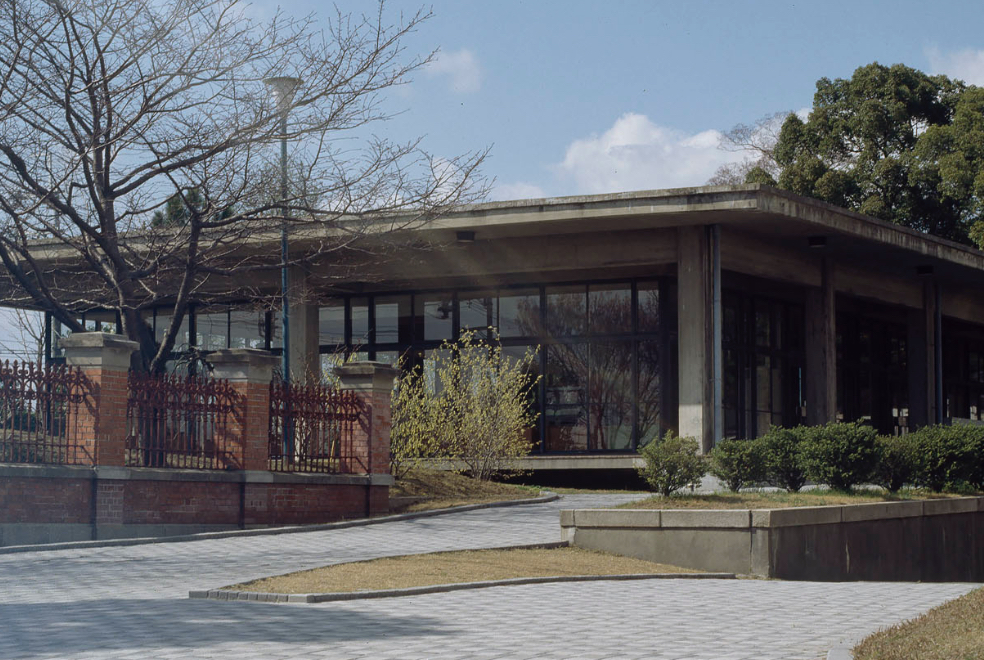
The lounge built in 1966 on the west side of the New Exhibition Hall
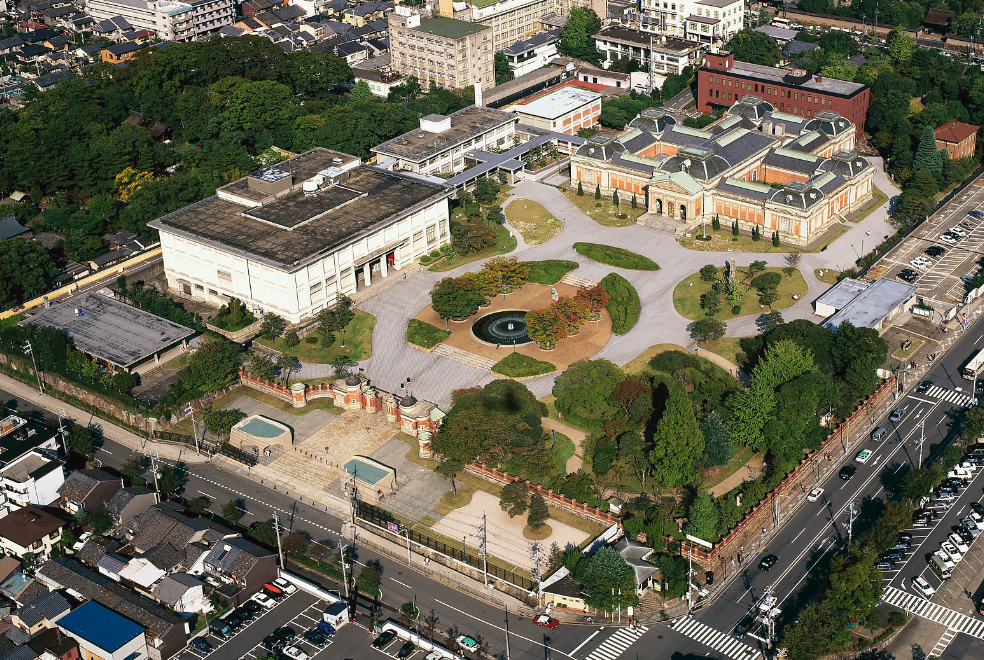
Aerial view of the museum grounds around 1996
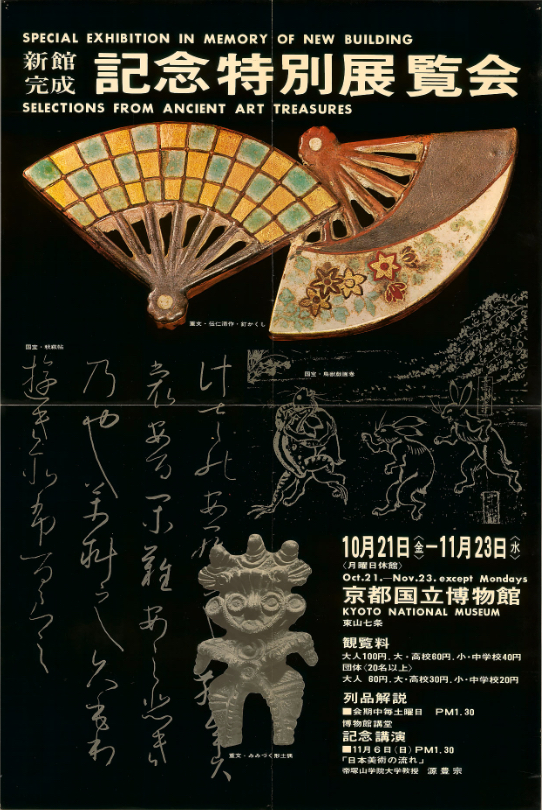
Poster for the 1966 special exhibition Selections from Ancient Art Treasures commemorating the completion of the New Exhibition Hall
A Special Exhibition in Commemoration of the New Exhibition Hall
The 1966 exhibition Selections from Ancient Art Treasures commemorated the inauguration of the New Exhibition Hall. Responding to the public's increasing interest in a diverse range of cultural properties, the exhibition drew on the support of private collectors, shrines and temples, as well as other public and private museums to exhibit a wide selection of masterpieces rarely displayed outside of their home institutions. These were displayed alongside masterworks owned by and on long-term loan to the museum. Visitors were treated to an impressive display of important works spanning such fields as fine arts, decorative arts, and archeology.
Painting and ceramics galleries in the New Exhibition Hall
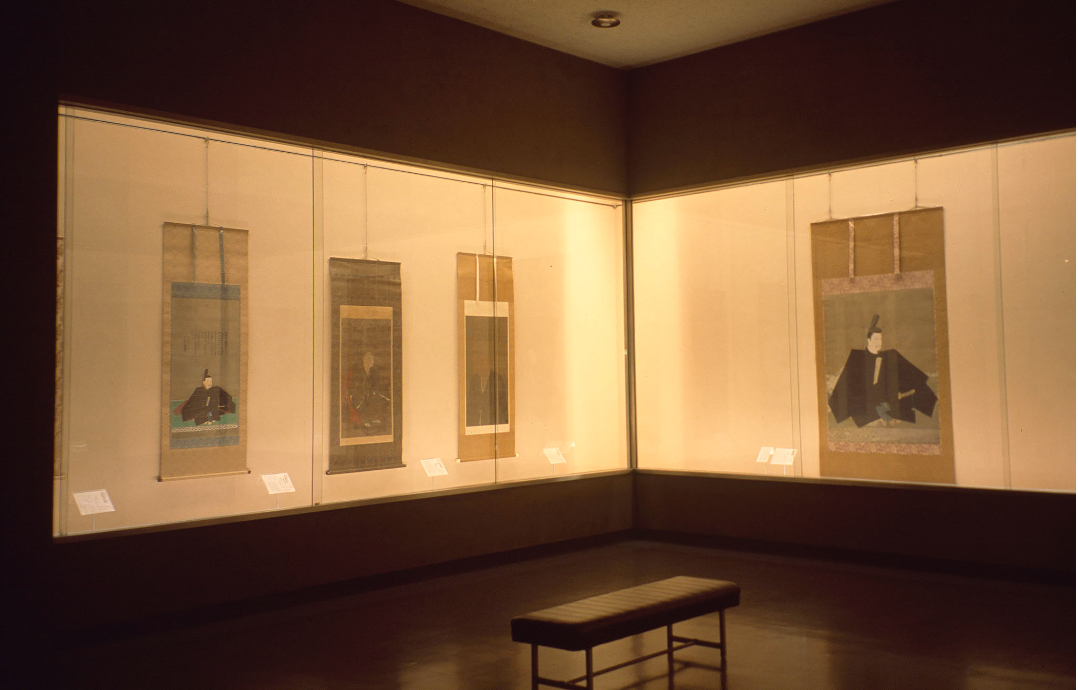
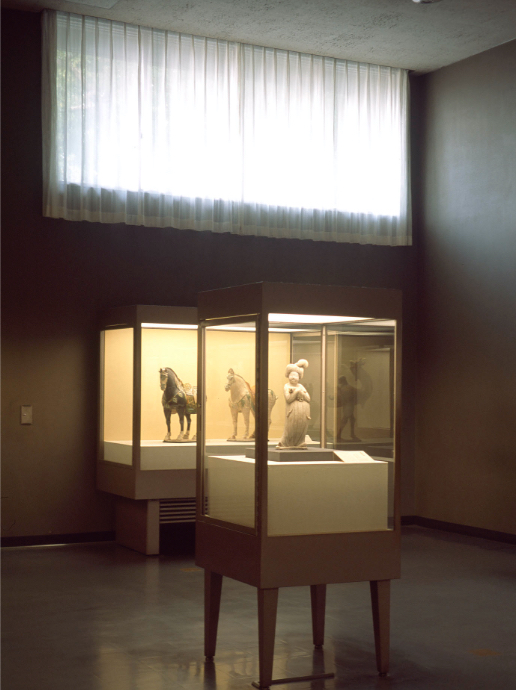
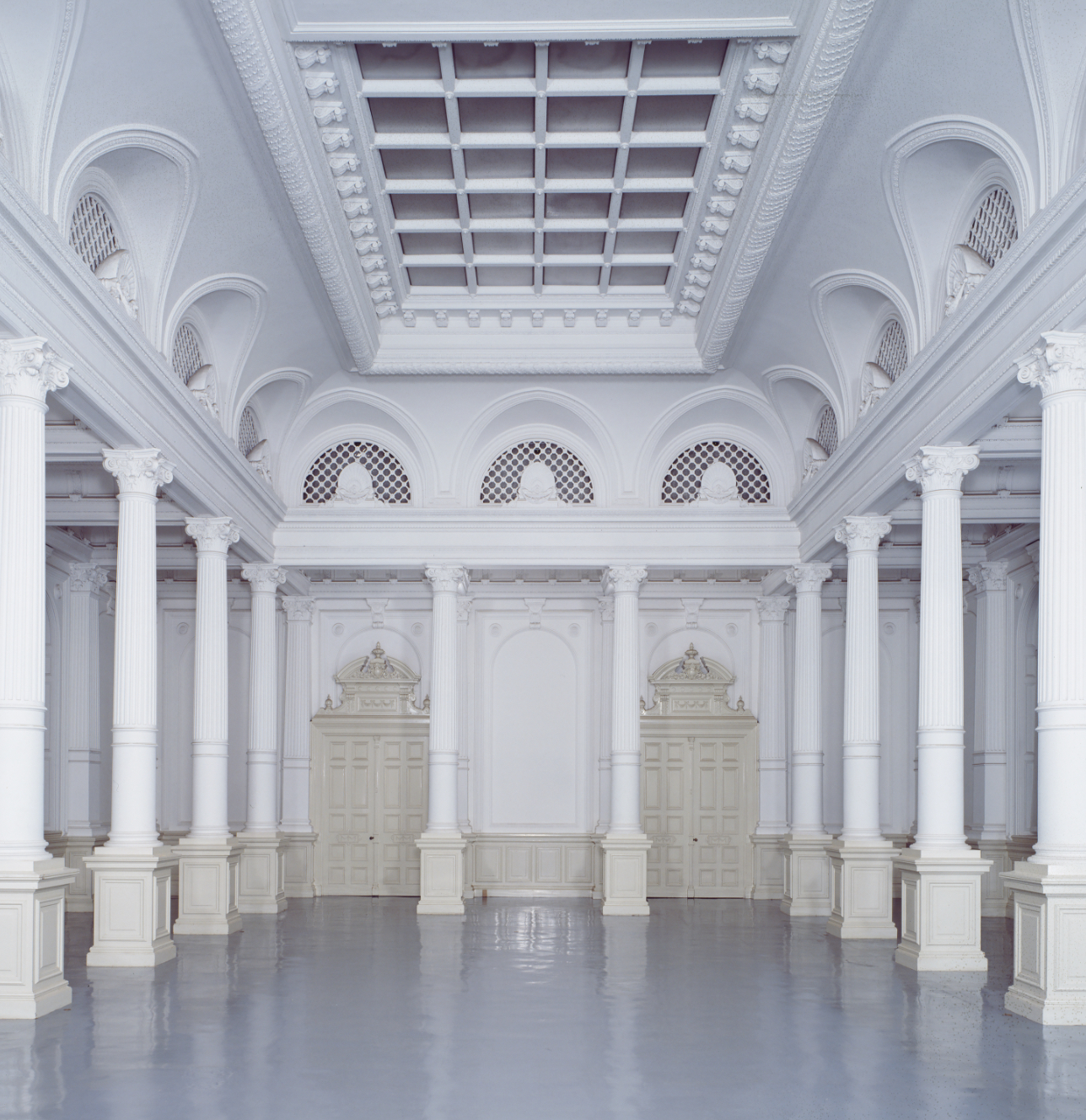
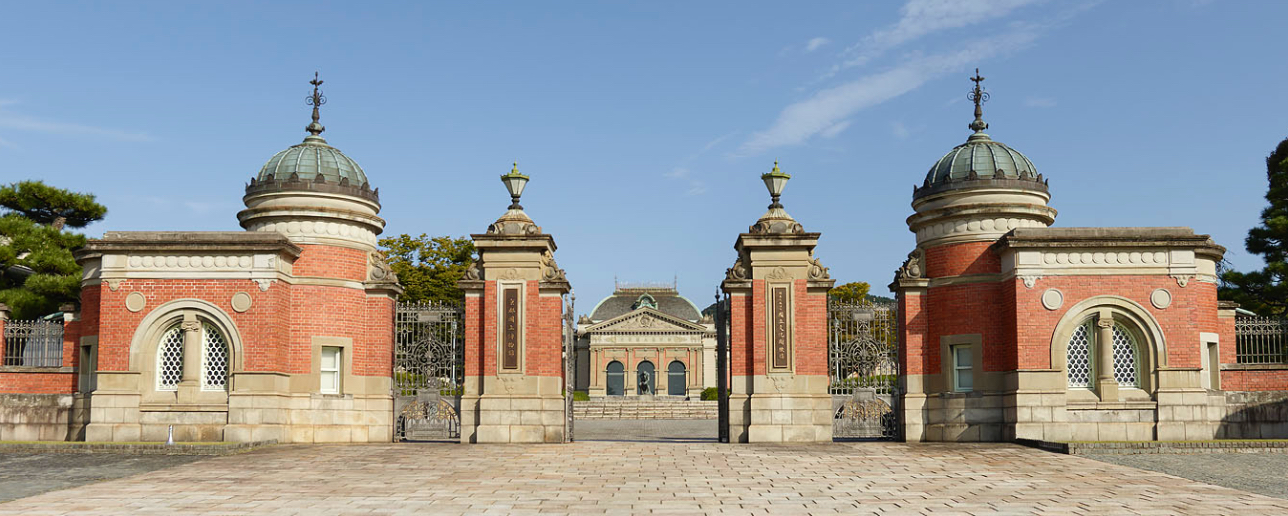
Above: Inside the Central Gallery of the Main Hall (today known as the Meiji Kotokan)
Below: The Main Gate (West Gate)
Renovations of the Main Hall and Designation as an Important Cultural Property
The Unrealized Dream of a History Museum
After the New Exhibition Hall opened, the Main Hall was closed for renovations. Its wooden floors were replaced with concrete covered in plastic tiles, natural light was blocked out in favor of a newly installed lighting system, and the interior was repainted. New steel cases were installed, and the old wood-framed cases were given to the Meiji-themed open-air museum Meiji-Mura in Inuyama, Aichi prefecture. Restrooms and other facilities for museum visitors were installed in the former courtyards.
In conjunction with a reorganization of government agencies in 1968, the Kyoto National Museum became an auxiliary institution of the Agency for Cultural Affairs. The following year, the original structures of the former Imperial Museum of Kyoto (the Main Hall, the Main Gate and adjacent ticket office) were collectively designated an Important Cultural Property.
The initial plan after the renovation was to make the Main Hall into a history museum, but these plans changed with the subsequent decision to build the National Museum of Japanese History in Chiba. After 1973, therefore, the Main Hall came to be used as a venue for special exhibitions as well as occasional concerts and events.
Column 03
The Kyoto National Museum Gardens
The fountain located between the Main Gate (West Gate) and the Meiji Kotokan (Main Hall) was part of the original design of the museum grounds, though over the years its size and location have changed slightly. The initial plan to draw water from the Lake Biwa Canal was not realized. In 1968, Matsushita Electric Company donated the current circular fountain, which has undergone upgrades over time and continues to be enjoyed by museum visitors. Originally, this pool was surrounded by flower beds and a grassy lawn, and the grounds were open as public leisure space. In 1950, after Rodin's The Thinker was installed in the museum garden, the need to protect this open-air artwork resulted for the first time in an admission fee to enter the museum grounds. Today, there are numerous cultural properties exhibited throughout the gardens.
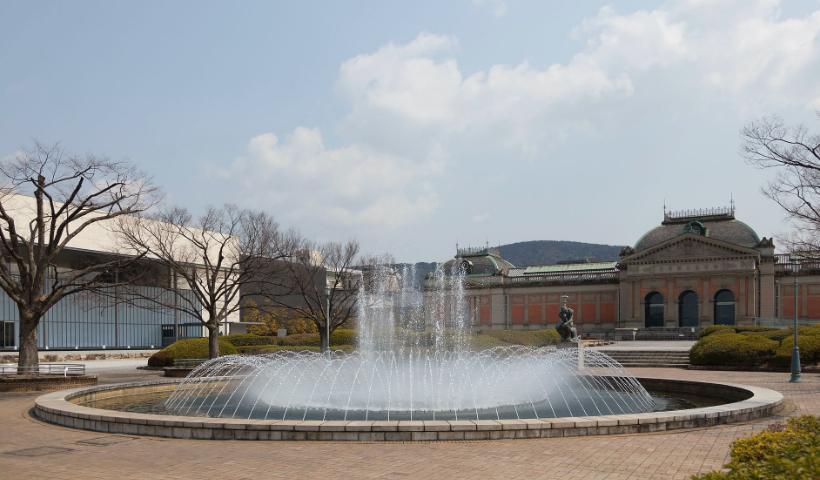
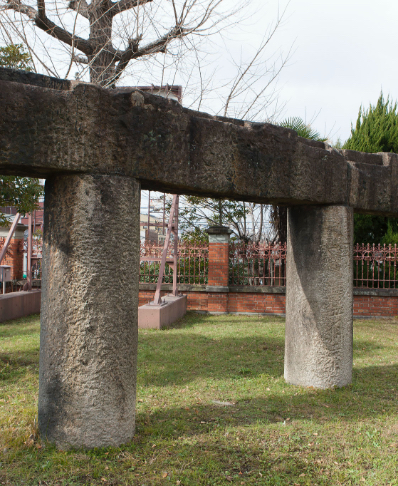
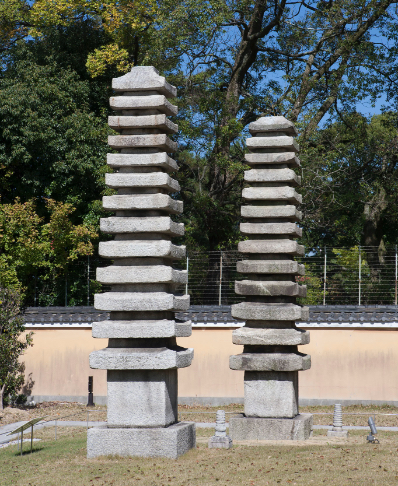
Above: Large circular fountain
Lower left: Gojō Bridge Pillars and Beam
Lower right: Thirteen-Story Stupas of Umamachi
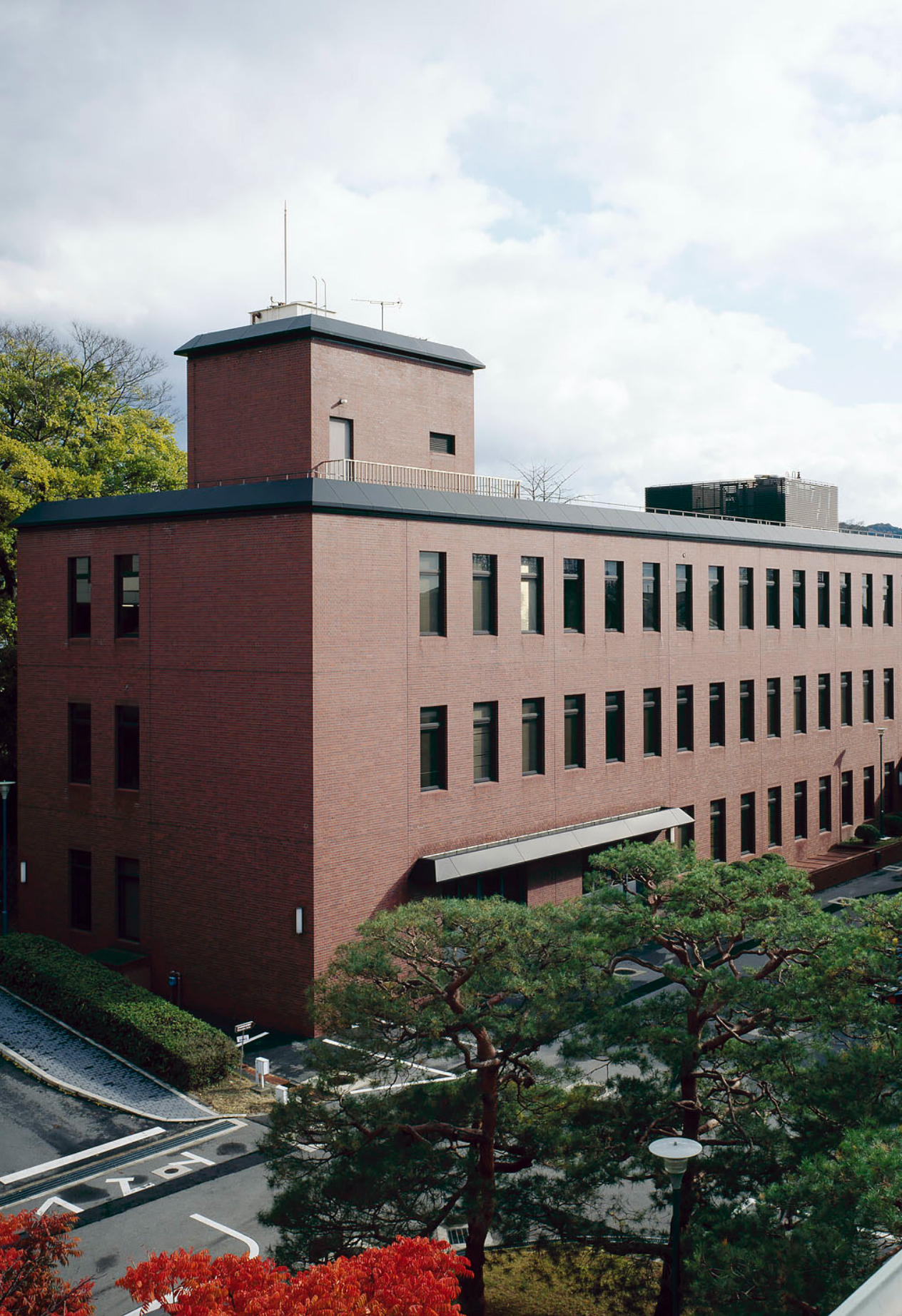
The Conservation Center for Cultural Properties, built in 1979.
The Opening of the Conservation Center for Cultural Properties
An Onsite "Hospital" for the Treatment of Artworks
The enactment of the Ancient Temples and Shrines Preservation Law in 1897 and the start of the National Treasures system spurred rapid progress in the conservation and restoration of cultural properties. The Kyoto National Museum has likewise been engaged in the conservation of objects in its collection since its founding in that same year.
The first dedicated site for conservation was an earthen-walled storage hall that was renovated in 1951. Conservation work on painting, calligraphy, and sculpture was later carried out in the basement of the New Exhibition Hall, and still later in a former storage facility (the current Technical Archives Hall), though none of these facilities were sufficient.
In 1980, the Conservation Center for Cultural Properties opened as a facility dedicated to art conservation. It was fully equipped with an x-ray room, conservation studios, and a fumigation room.
Conservation treatments
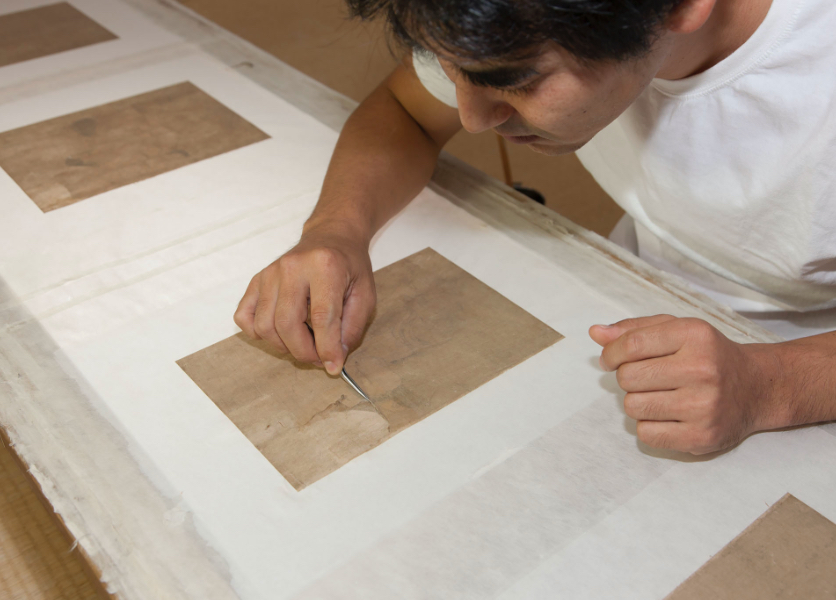
Removing lining papers from a painting
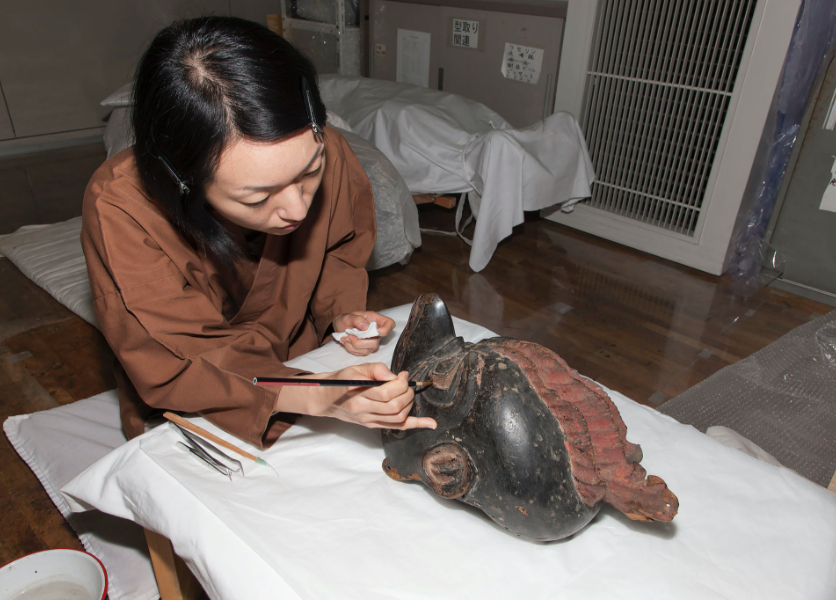
Consolidating loose pigments on a Gigaku mask
Becoming an Independent Administrative Institution
The national museums moved out from under the direct jurisdiction of the national government in 2001 following new administrative reforms, but they were not fully privatized. Instead, the Tokyo National Museum, Nara National Museum, and Kyoto National Museum (and later the Kyushu National Museum) were merged under a newly formed umbrella organization called the "Independent Administrative Institution National Museum."
In 2007, another administrative reform merged this organization with the "Independent Administrative Institution National Research Institute for Cultural Properties," which then comprised the two national research institutes familiarly known as Tōbunken and Nabunken (later to be joined by the International Research Centre for Intangible Cultural Heritage in the Asia-Pacific Region). The national museums and research institutes were now joined under the management of the National Institutes for Cultural Heritage (NICH). Today, operating under this streamlined administrative system, each of these museums and research institutes maintains a distinct character resulting from its individual history and mission.
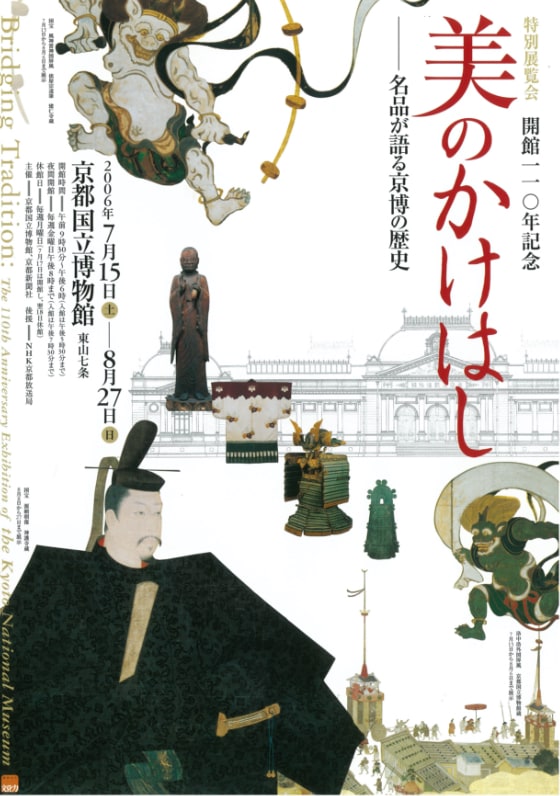
Flyer for the special exhibition Bridging Tradition: The 110th Anniversary Exhibition of the Kyoto National Museum
Special Exhibition
Bridging Tradition: The 110th Anniversary Exhibition of the Kyoto National Museum
In May 2006, the Kyoto National Museum celebrated its 110th anniversary. This exhibition traced the long history of the museum, focusing on its activities of collecting, researching, and exhibiting various works related to Kyoto, the capital of a thousand years. Tawaraya Sōtatsu's Wind God and Thunder God (National Treasure, Kennin-ji Temple), on long-term loan to the museum, was put on view in this exhibition.
Column 04
Exhibiting the Museum Collection
When the museum first opened, works from the collection were exhibited according to artistic category, but beginning in autumn 1915 with the special exhibition in celebration of Emperor Taishō's enthronement, the museum began showing objects chronologically. Then in 1924, after the museum came under the administration of Kyoto City, it again began exhibiting according to artistic genre, a practice that continues today.
As a means of highlighting the permanent collection, the museum began in 1898 to organize special New Year's exhibitions. From 1901 to 1910, the New Year's exhibition featured works related to the annual New Year's poetry reading at the imperial court and to the Chinese zodiac animal of the coming year. Following the opening of the Heisei Chishinkan Wing in 2014, this tradition of an annual New Year's zodiac animal exhibition has been revived.
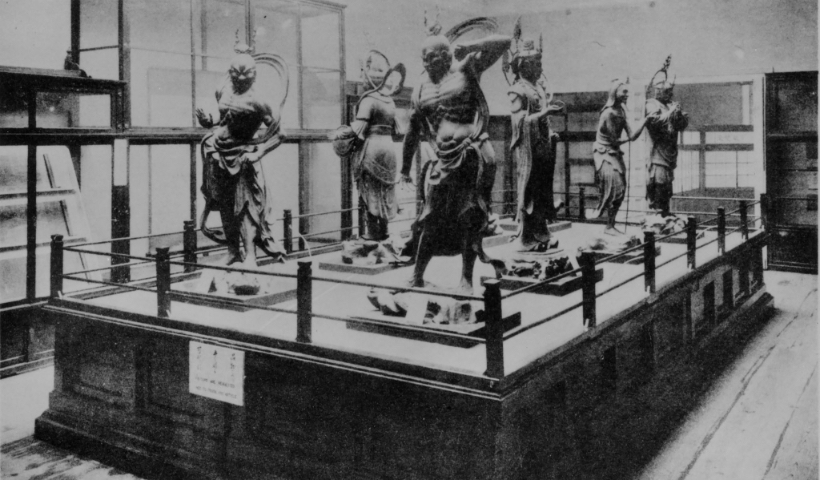
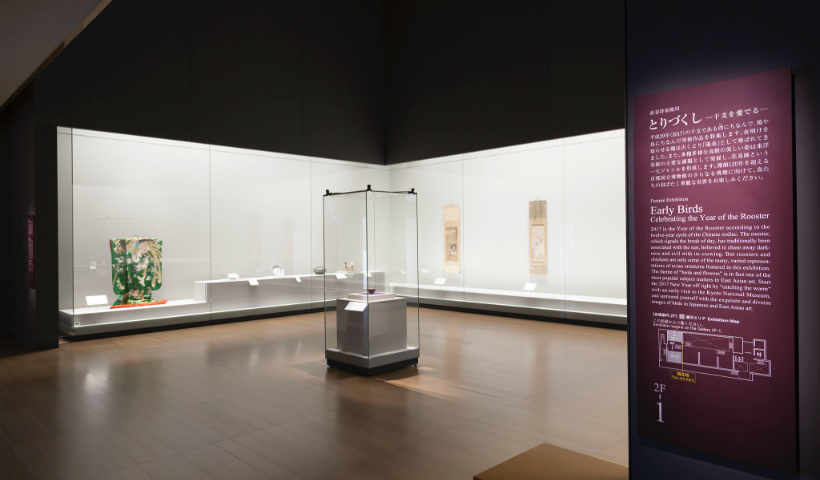
Above: Exhibition of Kamakura-period art at the Imperial Household Museum of Kyoto
Below: A New Year's exhibition celebrating the Chinese zodiac animal of the year
